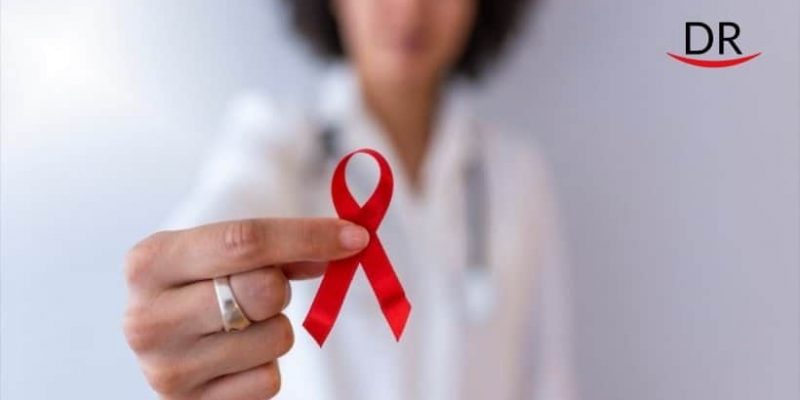Introduction
Acquired ImmunoDeficiency Syndrome (AIDS) is a medical condition caused by Human Immunodeficiency Virus (HIV). HIV infection is great a threat and can be called as a curse to the human race. The scientific community first noticed and recognised the presence of AIDS as an actual disease after an increase in the incidence of rare opportunistic infections and cancers among healthy homosexual men. HIV-1 was identified as the causative organism. HIV-2 was reported first in Africa in 1985. HIV-2 is markedly different from HIV- 1. It closely resembles a simian virus that infects macaques in captivity.
Overview
The infection
The main site of the attack of the virus is the immune system, chiefly the CD4 T-lymphocytes (CD4 cells). Once infected, the virus progressively and silently overpowers the body’s defense mechanisms, and this results in opportunistic infections and cancers that are usually rare.
Activated and differentiated CD4 cells have a pivotal role in the activation of cell-mediated and humoral immune systems. HIV infection causes in the release of CD4 cells in the peripheral blood. In cases of untreated patients, this release continues over several years until the patient succumbs to AIDS. It is the last stage of the HIV infection, and it presents itself between 2 and 15 years post-infection with the virus.

HIV subgroups
HIV-1
HIV-1 is well-known for its extensive genetic diversity. There are four different groups coming under HIV-1. They are M, N, O, and P. The most commonly reported HIV virus is group M. Group N is less prevalent, reported only from Cameroon, Africa. Group O accounts for 1% of the total HIV-1 cases and is mainly found in Cameroon and Gabon, Africa. Group P is the rarest among all and has been identified in Cameroonian pregnant women in France. It has a prevalence of 0.06% of total HIV infections.
HIV-2
HIV-2 type of virus is most commonly reported in West Africa, Guinea-Bissau and Senegal. It is having the highest incidence. Eight different types of HIV-2 exists, HIV-A to HIV-H. Group A is reported throughout the sub-Saharan region. Group B is reported in the Ivory Coast.
Treatment options for HIV
HIV infection has a complex pathogenesis and varies substantially in different patients. It often complicates treatment options that are currently available for HIV infection. Management of HIV infection is done using different combinations of drugs. This method of treatment is known as AntiRetroviral Therapy (ART).
FDA-approved HIV drug classes
- Reverse Transcriptase Inhibitors
zidovudine, didanosine, abacavir, tenofovir and combivir.
- Protease Inhibitors
lopinavir/ritonavir, indinavir, ritonavir, nelfinavir and amprenavir.
- Fusion Inhibitors
Enfuvirtide
- Chemokine Receptor 5 Antagonist
Maraviroc
- Integrase Strand Transfer Inhibitors
Raltegravir, elvitegravir, and dolutegravir.
Latest WHO recommendations for ART
First-line ART
Adults: Tenofovir disoproxil fumarate (TDF) + lamivudine (3TC) or emtricitabine (FTC) + efavirenz (EFV) as a fixed dose is the favoured choice for this type of ART.
Contraindications
- Creatinine clearance is less than 50ml/min: Tenofovir
- Patients on psychoactive drug treatment: Efavirenz
- Patients who are pregnant: Efavirenz
- ALT elevation: Nevirapine
When this drug combination is contraindicated or unavailable
- Zidovudine (AZT) + 3TC + EFV,
- AZT + 3TC + nevirapine (NVP), or
- TDF + 3TC (or FTC) + NVP is used.
Pregnant and breastfeeding patients: First-line ART in this subpopulation is comprised of a single daily dose of TDF + 3TC (or FTC) + NVP.
Paediatric patients
- Children below three years – Lopinavir/Ritonavir
- Children over three years – EFV
- Children younger than three years, who develop TB – Lopinavir/Ritonavir (LPV/r) and abacavir (ABC) + 3TC or AZT + 3TC until TB infection is cleared.
Second-line ART
Adults, including pregnant and breastfeeding patients: When a first-line treatment of ART fails second-line ART is utilised.
Stavudine (d4T) + 3TC, TDF + 3TC (or FTC)
Paediatric patients
- Children below three years, first-line ART is continued when it fails. No change in treatment is recommended
- When first-line ART fails in children ages three and up, If ABC or TDF + 3TC (or FTC) fail, the recommended option is AZT + 3TC
- After a failure of AZT or d4T + 3TC (or FTC) in first-line treatment, the preferred NRTI option is ABC or TDF + 3TC (or FTC)
CD4 count monitoring for therapeutic response
Monitoring patients viral load is necessary to identify ART response. When the viral load analysis is not practical via polymerase chain reaction (PCR), branched chained DNA (bDNA), and nucleic acid sequence-based amplification (NASBA), the CD4 count is used as an indicator of HIV treatment response.
Adverse Effects of ART
- Gastrointestinal: Nausea, diarrhoea, vomiting, taste perversion, constipation, dyspepsia, abdominal pain, hepatotoxicity and pancreatitis
- Central nervous system: Headache, vision problems, dizziness, tinnitus, insomnia, paresthesia, pain/numbness/tingling in extremities, peripheral neuropathy, somnolence, excessive sleep at night, memory problems, loss of olfactory function, and hearing impairment
- Hematological: Anaemia, bilirubinemia, increased urate, and blood in the urine
- Psychological: Anxiety, confusion, depression, nightmares
- Metabolic: Abnormal fat distribution (lipodystrophy), anorexia, dyspnea, fatigue, lethargy, and weight gain
- Dermatological: Skin rash, facial discolouration, and pruritus
- Musculoskeletal: Body aches and vague chest pain.
- Miscellaneous: Oral ulcerations, fever, and irregular menstrual cycles.
Major factors for ART non-adherence
Drug Abuse
Continuous drug abuse is an important risk factor in HIV/AIDS patients’ ART, non-adherence and mortality. The major mechanisms by which drug abuse results in ART non-adherence includes drug abuse induced neurocognitive/psychosocial impairment and psychiatric dysfunctions.
Mental Disorders
The prevalence of psychiatric disorders is high among HIV-infected individuals. Childhood sexual violence-induced anxiety and depression may also cause ART non-adherence. Hazardous drinking is another significant precipitator.
Socioeconomic Status
Socioeconomic status is strongly associated with HIV-related mortality. Opportunities for patients of lower socioeconomic status to receive ART are higher. The quality of housing and access to food are the two most important factors.
Poor Literacy
Literacy is another factor closely associated with ART non-adherence. People of lower health literacy experiences higher illness severity. WHO Health literacy has been defined as “the cognitive and social skills which determine the motivation and ability of individuals to gain access to, understand, and use information in ways which promote and maintain good health”.
Social Stigma
The stigma of HIV and AIDS is considered to have a negative influence on ART adherence. Stigma can be defined as an “quality that is deeply discrediting” imposed by society that decreases someone “from a whole and usual person to a tainted, discounted one”.



Conclusions
Recent advances in HIV treatments have altered the nature and progression of HIV/AIDS. Unfortunately, the recent statistics of the worldwide HIV burden tells another story which is the one with a steady rate of HIV-related deaths. More people die of complications and the progression of HIV to AIDS than should be when ART is used properly. The major obstacle a physician faces with ART is the occurrence of adverse side effects of the treatment, which convinces patients to stop the treatment. Poverty, lack of awareness, and the social stigma associated with the infection complicate the situation further. Appropriate changes in treatment regimens and medications can help patients overcome adverse effects and potential complications.
References
- Barin F, M’Boup S, Denis F, Kanki P, Allan J S, Lee T H, Essex M: Serological Evidence for Virus Related to Simian T-Lymphotropic Retrovirus III in Residents of West Africa. Lancet. 1985, 2:1387–89.
- Brenchley J M, Schacker T W, Ruff L E, Price D A, Taylor J H, Beilman G J, Nguyen P L, Khoruts A, Larson M, Haase A T, Douek D C: CD4+ T Cell Depletion During All Stages of HIV Disease Occurs Predominantly in the Gastrointestinal Tract. J Exp Med. 2004, 200:749–59.
- Plantier J C, Leoz M, Dickerson J E, De Oliveira F, Cordonnier F, Lemée V, Damond F, Robertson D L, Simon F: A New Human Immunodeficiency Virus Derived from Gorillas. Nat Med. 2009, 15:871–72.

















Comments